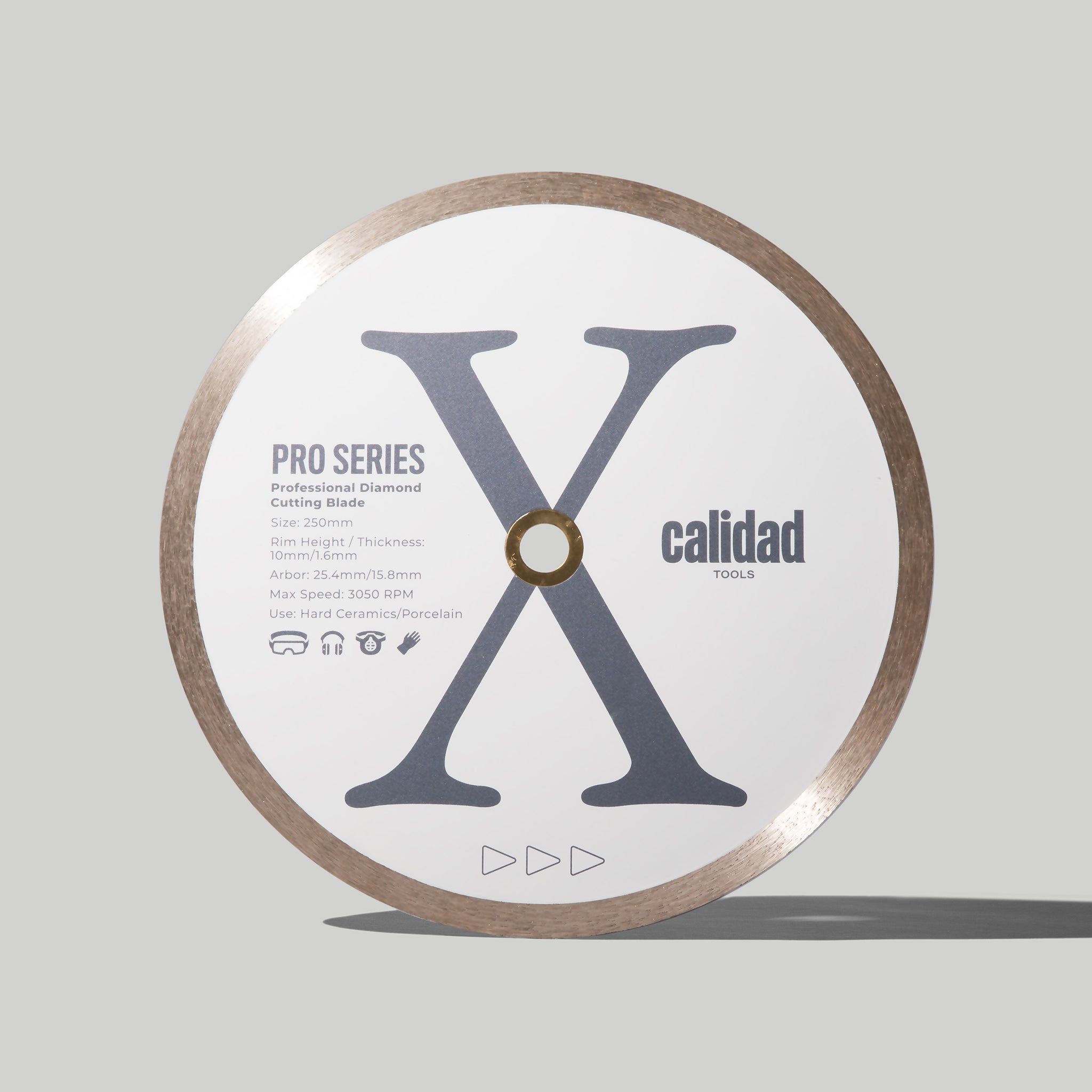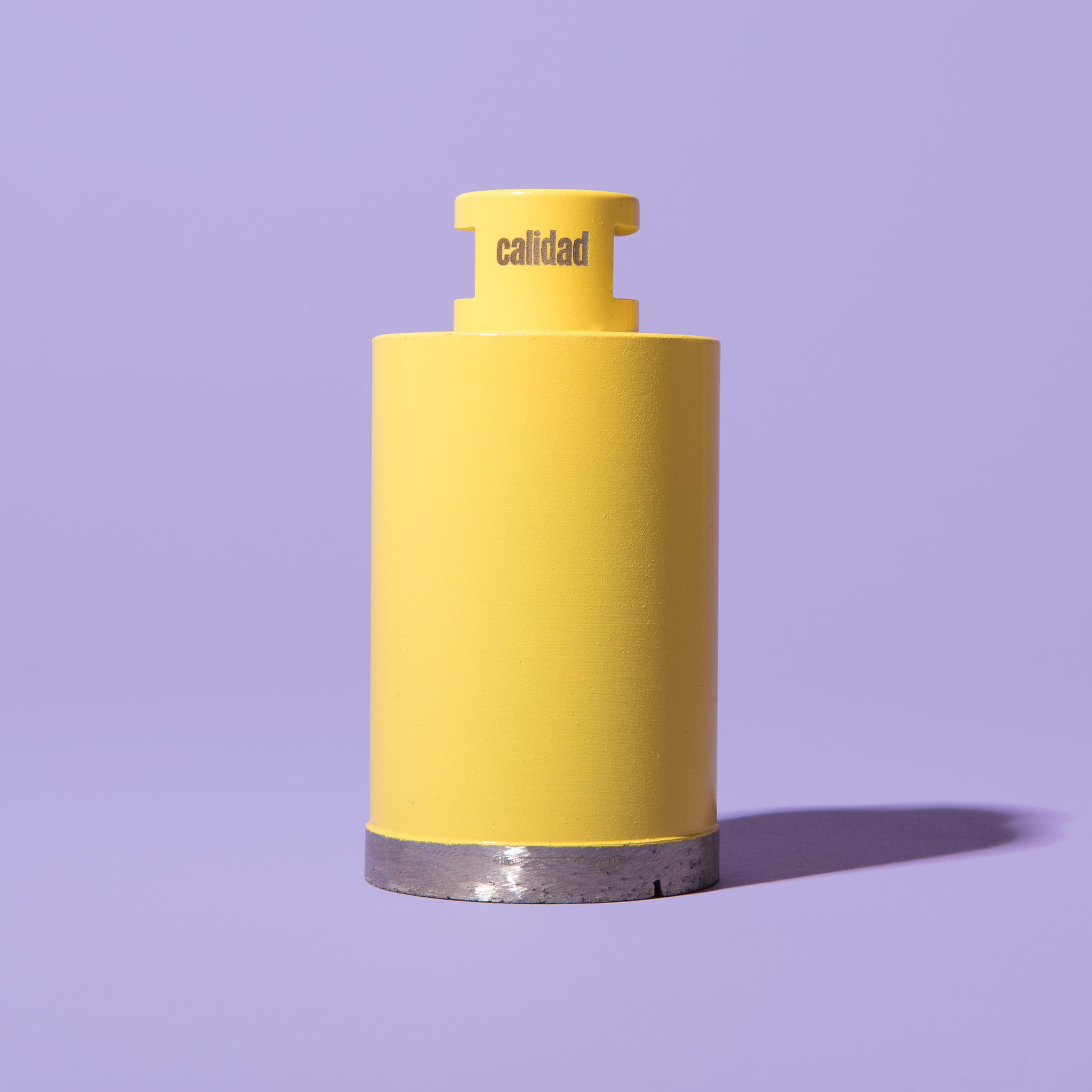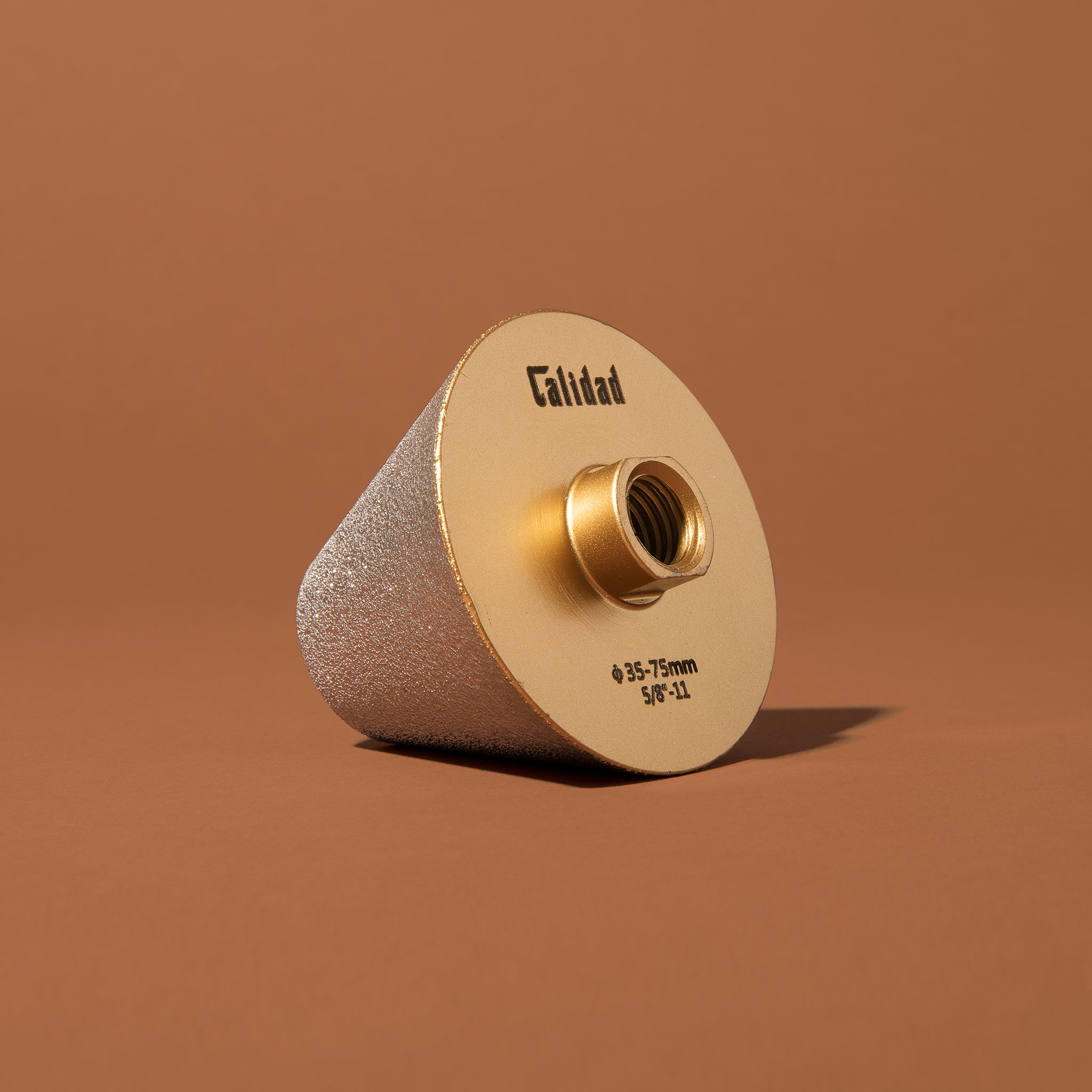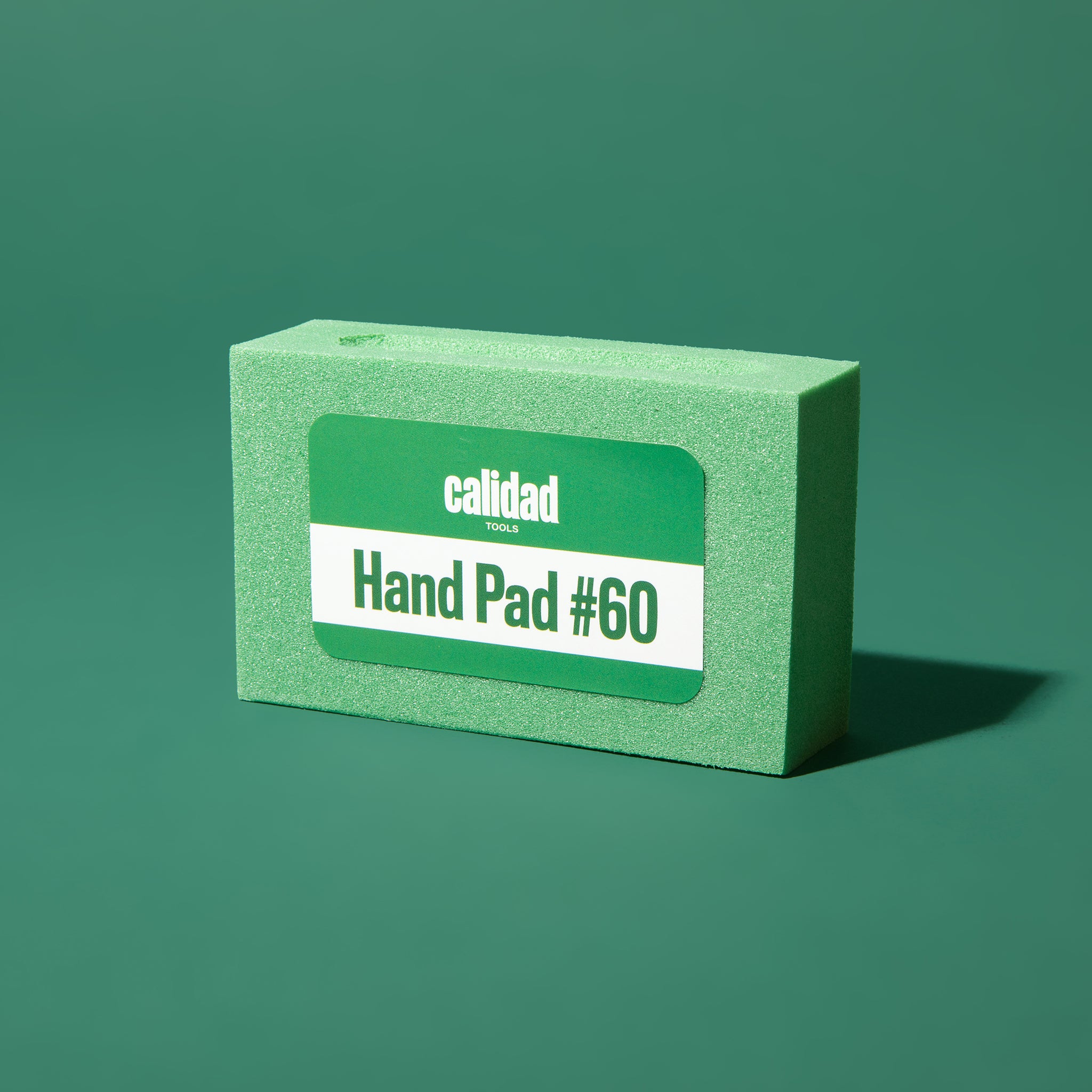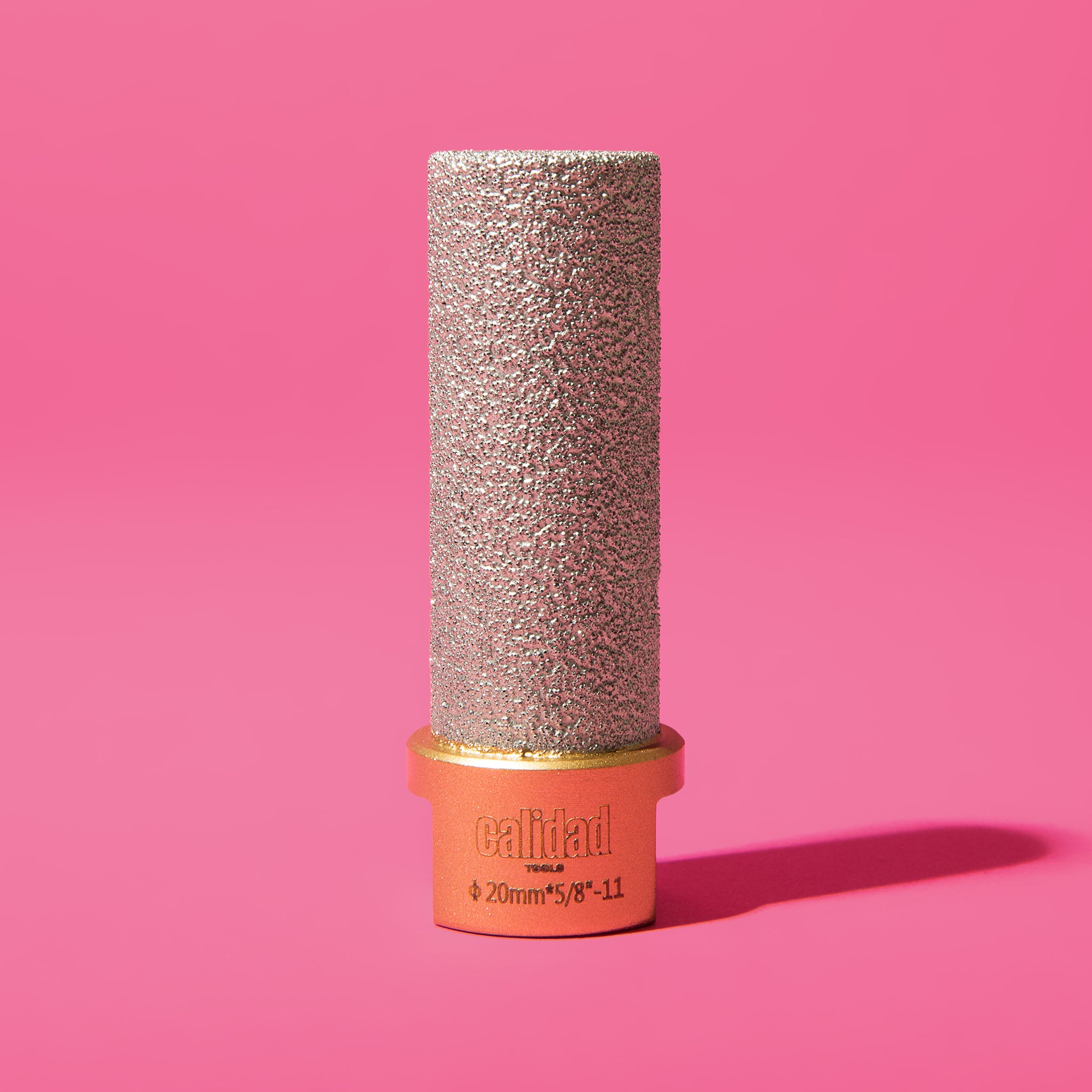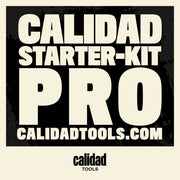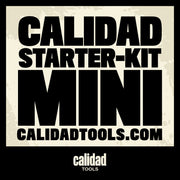Can I Use Large Format Tiles In My Shower?
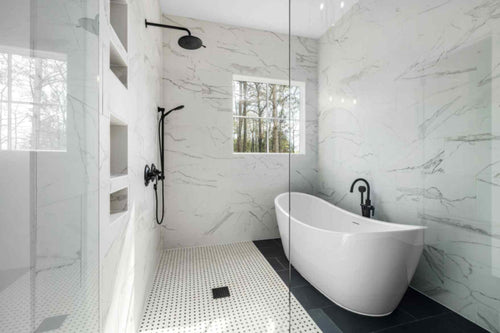
Remodeling your bathroom is one of the best ways of adding value to your home. And if you've ever pursued social media for shower ideas, you've probably run into tons of showers that use large tiles.
This is especially true for shower floors, but why is that?
In this article, I'm going down the rabbit hole of the large shower tile trend so you don't have to.
I'll go over everything you need to know about these tiles - from what they are and their benefits to how to pick the best tile for your shower and how to install it.
What Are Large-Format Tile For Bathrooms?
A large format tile is your typical tile that's just larger than a normal tile. It usually measures 24 x 24 inches, but you can find some that are as large as 24 x 48 inches. As for the shape, these tiles come in rectangle and square shapes.
When it comes to materials, large tile is just as diverse as regular tile - they're made out of porcelain, natural stone, ceramic, and even concrete. Installing large tiles in your bathroom is a no-brainer.
They give the space a dash of style and modern chic, plus there are fewer grout lines which means less chance of water damage.
With that said people are still using smaller tiles for showers. Why is that? Let's find out!

Why Do People Use Small-Format Tiles In Their Bathrooms?
Professional tilers often recommend using small tiles for shower floors for two main reasons. Firstly, smaller tiles are easier to adjust to the slope of the shower pan, ensuring proper drainage by allowing water to flow freely towards the drain.
Large tiles can interfere with this slope, leading to potential flooding issues in small shower spaces. However, if your shower is spacious enough to accommodate large tiles while maintaining proper drainage, they can be a viable option.
Secondly, small tiles provide more traction due to the ridges between them, reducing the risk of slips on the shower floor. While modern ceramic tiles often come with textured surfaces for enhanced grip, smaller tiles remain popular for their added traction.
This helps prevent slip-and-fall accidents in the shower, reducing the risk of injury.
Now let's go over the advantages of installing large tiles in your bathroom.
What Are The Advantages Of Using Large-Format Tile On Shower?
Large-format shower tiles are gaining popularity due to their numerous benefits:
Less grout required
With larger tiles, there are fewer grout lines, resulting in quicker installation and less grout needed.
Seamless look
Large tiles create a seamless appearance, providing an elegant and luxurious feel to your shower space. Paired with clear glass doors, it enhances the open-concept design of your bathroom.
Easy maintenance
With fewer grout lines, maintenance becomes easier, requiring less effort to keep your shower clean.
The illusion of space
Large tiles can make a small bathroom appear larger by creating a sense of expansiveness, especially in open layouts.
Quick installation
Fewer tiles to cut and grout joints to fill mean a faster installation process.
Versatility
Large format tiles offer versatility, allowing you to mix and match with other materials, sizes, colors, and designs to create a unique and balanced look in your bathroom.
Beautiful aesthetics
Large tiles enhance the aesthetic appeal of your shower, adding elegance, minimalism, and originality that can boost your home's value.
What Are the Disadvantages Of Installing Large Format Tiles in Showers?
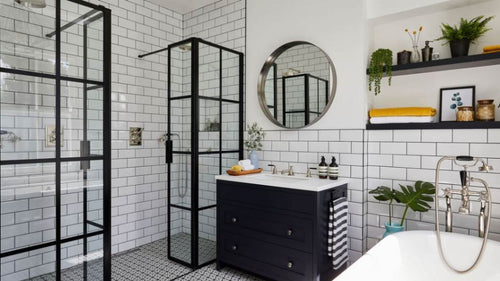
While large format tiles offer numerous benefits, they also present some potential disadvantages:
Challenging installation
Large tiles require skilled professionals for installation due to their size and weight. Handling and installing them can be tricky, leading to higher installation costs.
Improper installation may result in cracks or damage, necessitating costly repairs.
More prone to cracking
Due to their size and weight, large format tiles are more susceptible to cracking if not installed properly. Their reduced flexibility compared to smaller tiles makes them vulnerable to damage from impacts, increasing the risk of cracks over time.
Higher cost
Large format tiles are generally more expensive than smaller tiles. Their size and specialized handling contribute to higher production and transportation costs.
Additionally, skilled labor is required for installation, further increasing overall expenses. This can pose a challenge for homeowners on a tight budget in Houston.
How Do I Choose The Right Large-Format Tile For My Bathroom?
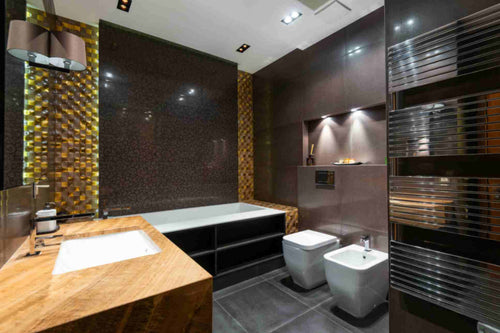
Today, large tiles offer a wide range of styles and designs, including squares, rectangles, and hexagons, providing ample variety to choose from.
To select the right tiles for your shower floor, it's essential to match them with your bathroom's theme. Large tiles can enhance the aesthetics of your shower floor when they complement the bathroom decor.
The 12" x 24" size is particularly popular, offering extensive floor coverage. When choosing tiles, opt for colors and designs that align with your bathroom's color scheme.
Additionally, consider incorporating contrasting colors to introduce vibrancy and illumination to the space.
Why Is the Coefficient Of Friction So Critical For Large Shower Tiles?
Slipping on shower tiles can be hazardous, so it's crucial to consider the Coefficient of Friction (COF) of your chosen tiles. The COF indicates the surface's grip and its suitability for wet areas like shower floors.
When selecting tiles for your shower floor, prioritize those with COFs above 0.5. Aim for tiles with a COF of 0.6 or higher to ensure optimal safety. If the COF value isn't readily available, reach out to the manufacturer for clarification.
This proactive approach can help you choose tiles that provide the necessary traction to prevent slips and falls in your shower.
Factor In The Proportion And Scale
When choosing large format tiles for your bathroom, it's essential to consider the overall dimensions of the space. Opt for tiles that align proportionately with the room, minimizing the need for extensive cutting and adjustments.
For instance, if your bathroom measures 2500 mm in width, selecting large format tiles of 500mm will seamlessly fit within the space, requiring only minor modifications for grout lines.
This approach ensures a clean and visually uncluttered appearance, particularly beneficial in smaller bathrooms where maintaining proportionality enhances the overall aesthetic.
How To Achieve A Seamless Finish WIth Large Tile
To enhance the overall dimensions of your space and minimize grout lines, opt for a luxuriously seamless finish in your tiling scheme.
Rectified tiles paired with complementing or matching colored grout can achieve this effect splendidly. Unlike traditional tiles with uneven edges, rectified tiles are machine-cut to precise 90° angles, resulting in straight and crisp edges.
This precision allows for minimal grout lines, often as narrow as 1.5mm, creating a smooth and sleek finish in your bathroom.
Mix And Match Different Tiles
When choosing bathroom tiles, limit yourself to a maximum of three styles to avoid visual clutter. Create a luxurious look by mixing and matching colors and textures. Start with a sleek and simple main tile and complement it with feature tiles that add warmth, character, color, shape, or texture to the space.
Feature tiles can either be a contrasting color from the same collection or a different size or shape to create a dramatic touch. Explore various techniques for using feature tiles in your bathroom design to achieve a unique and spectacular look. For more tips, refer to our guide on using feature wall tiles.
Choosing The Perfect Grout
The color of your tile grout is essential for defining the look of your bathroom. It can either complement the tile's color, allowing the tile to stand out as the focal point, or contrast with the tile color to accentuate its shape.
Contrasting grout can be particularly effective with unique tile styles like fish scale or paddle designs, creating a bold and dramatic feature in your bathroom's design scheme. Choose your grout color wisely to achieve the desired aesthetic for your bathroom.
What To Consider When Installing A Large Format Tile In My Shower?
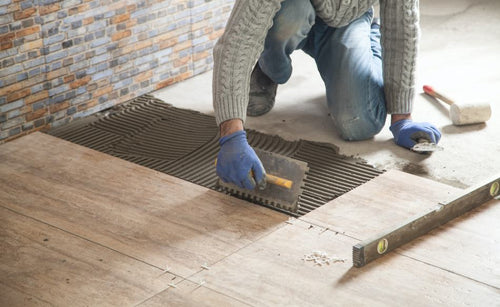
Now that you know why you should go with larger tiles in your bathroom, let's go over how you should install them.
Let's start with what patterns work best with these tiles.
What Patterns Can Work Best With Large Tiles
All large tiles can be installed in a straight-lay pattern. This is the pattern where all the edges line up. With that said, there are lots of people who install large rectangular tiles in a 33% offset pattern.
Now, you shouldn't go over 33% because most manufacturers advise against that. Guidelines typically advise keeping the offset at 33% or less. This precaution is necessary due to the manufacturing process of ceramic tiles.
During heating and cooling in the kiln, some degree of warpage can occur, which is a normal outcome of the manufacturing process. While many tile manufacturers excel at minimizing warpage, it cannot be entirely eliminated.
Therefore, adhering to these offset recommendations helps ensure a successful and visually pleasing tile installation while accounting for potential warpage variations.
As for whether you should set them vertically or horizontally that depends on what you're trying to achieve:
Horizontal orientation: Has a more traditional look and makes space look wider.
Vertical orientation: Has a more modern look and makes the space longer and taller
What is The Grout Joint Size For Large Tile?
While there's a complex formula for determining the ideal grout joint size for your tiles, a simpler approach suggests aiming for a grout joint between 1/8 to 1/4 inch for most 12x24 tile installations.
What's The Right Thinset Mortar For Large Tiles?
Selecting the right thinset is crucial for installing 12x24 tiles effectively. It's recommended to opt for a modified mortar that meets the ANSI A118.4 standard.
When choosing the thinset, look for terms like "medium bed," "LFT," "LHT," or simply "large tile" on the packaging. Proper mixing of the mortar is essential, and consider following guidelines for small batch mixing to ensure consistency and quality in your tile installation.
How Flat Does My Floor Have To Be For A Large Tile?
Large format tiles demand flatter floors, adhering to industry standards that dictate a maximum deviation of 1/8 inch in 10 feet.
Given that most floors don't meet this criterion, additional prep is necessary to achieve the required flatness before laying down your tile underlayment. Self-leveling the floor is the best method that I can think of.
Don't Forget To Use Leveling Clips
When Installing The TileFor flawless installations of 12×24 tiles and larger ones, I highly recommend incorporating tile leveling systems like Clip Gang's Tile Leveling Wedges.
While leveling clips won't eliminate the need to flatten your floor, they significantly aid in the installation process and can even assist in bending tiles slightly, ensuring a seamless finish.
How Do I Cut Large Tiles?
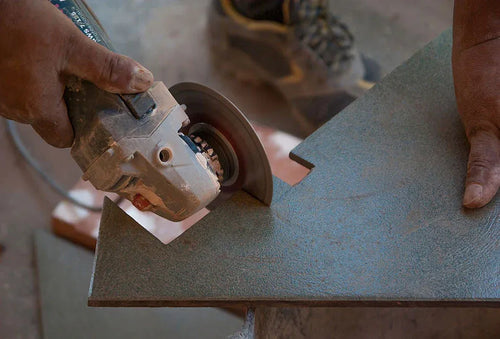
There's no way of getting around it, you'll need an electric saw or an angle grinder to cut large tiles.
But here are some considerations:
Snap Cutters
The manual cutters available at box stores may struggle to cut hard, thick porcelain tiles effectively. To handle such tiles, I recommend you go for the top-shelf stuff.
Additionally, manual cutters may not be suitable for tasks like cutting notches or trimming tiles, requiring alternative tools for those specific needs.
Electric Grinders
When it comes to cutting porcelain tiles, handheld electric grinders equipped with diamond blades are highly effective. These tools excel at various cuts, particularly for tasks like creating round holes, where they offer superior precision and efficiency.
Enter the Dinky Doinker, the ultimate solution for precise and effortless tile cutting. With its compact design and turbo diamond flush mount circular saw blade, it revolutionizes the cutting process, reaching spaces that traditional saw blades can't access.
While handheld electric grinders are a valuable addition to your toolkit, using them effectively requires a certain level of skill and expertise. It's essential to assess your own proficiency with tools before deciding on the best cutting method for your project.
However, with the Dinky Doinker, even intricate cuts become manageable, ensuring consistent and reliable results with every use.
Wet Saws
Wet tile saws offer unmatched consistency and precision when cutting large format tiles, making them the top choice for professionals. However, they also come with a higher price tag.
Alternatively, consider table top saws available at home improvement stores, which provide a budget-friendly option. While I have limited experience with these saws, they can be suitable for longer tiles, particularly porcelain plank tiles.
Conclusion
Installing large tiles in your bathroom is an excellent choice if you want to add a dash of modern chic to your home. Not to mention, it will raise your home's value. Just keep in mind they're a bit more difficult to install due to their size and weight.
Luckily, we have you covered for all your tiling needs. Visit our shop and get yourself cutting-edge tiling equipment such as leveling systems, cutting saws, polishing pads, and more!

